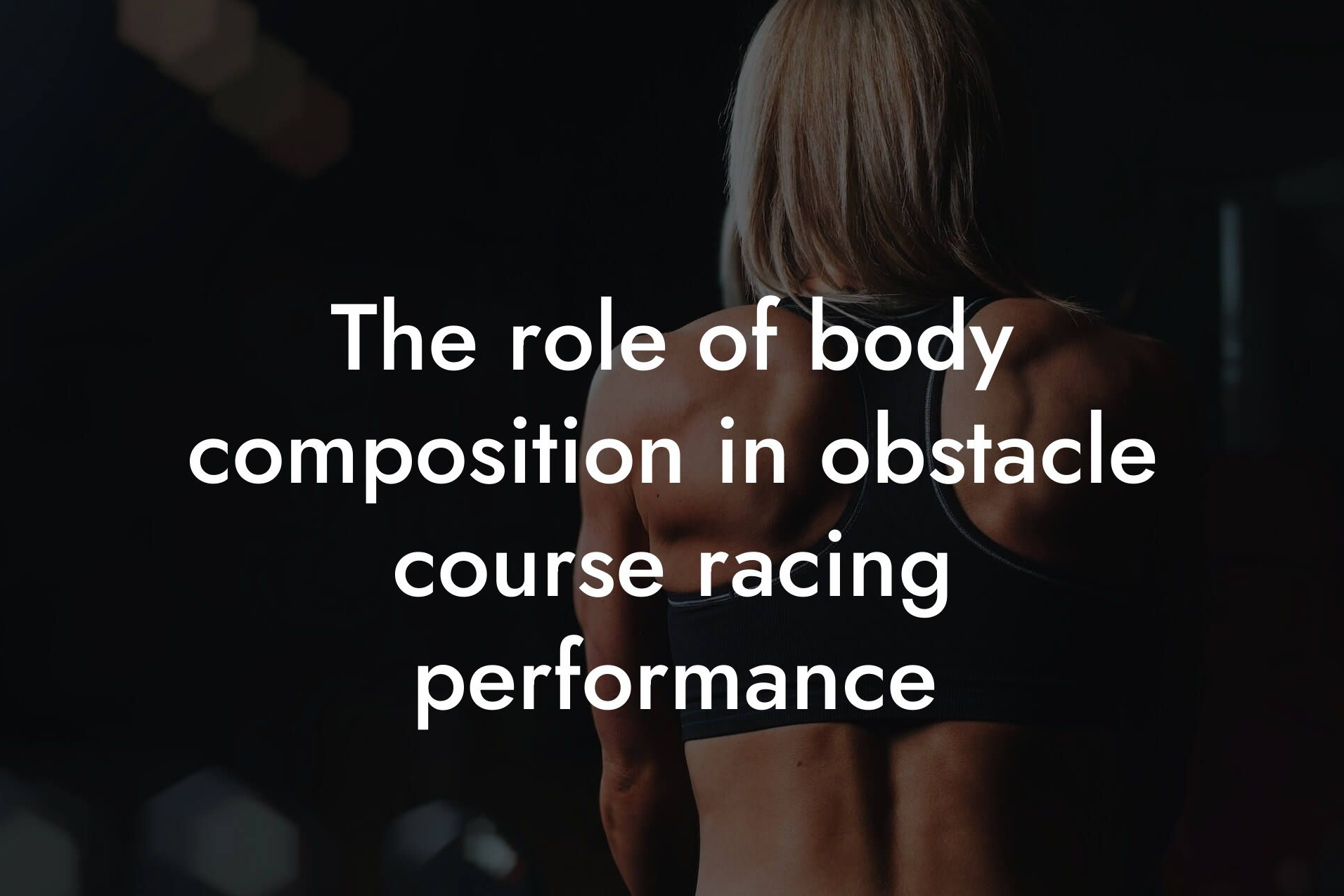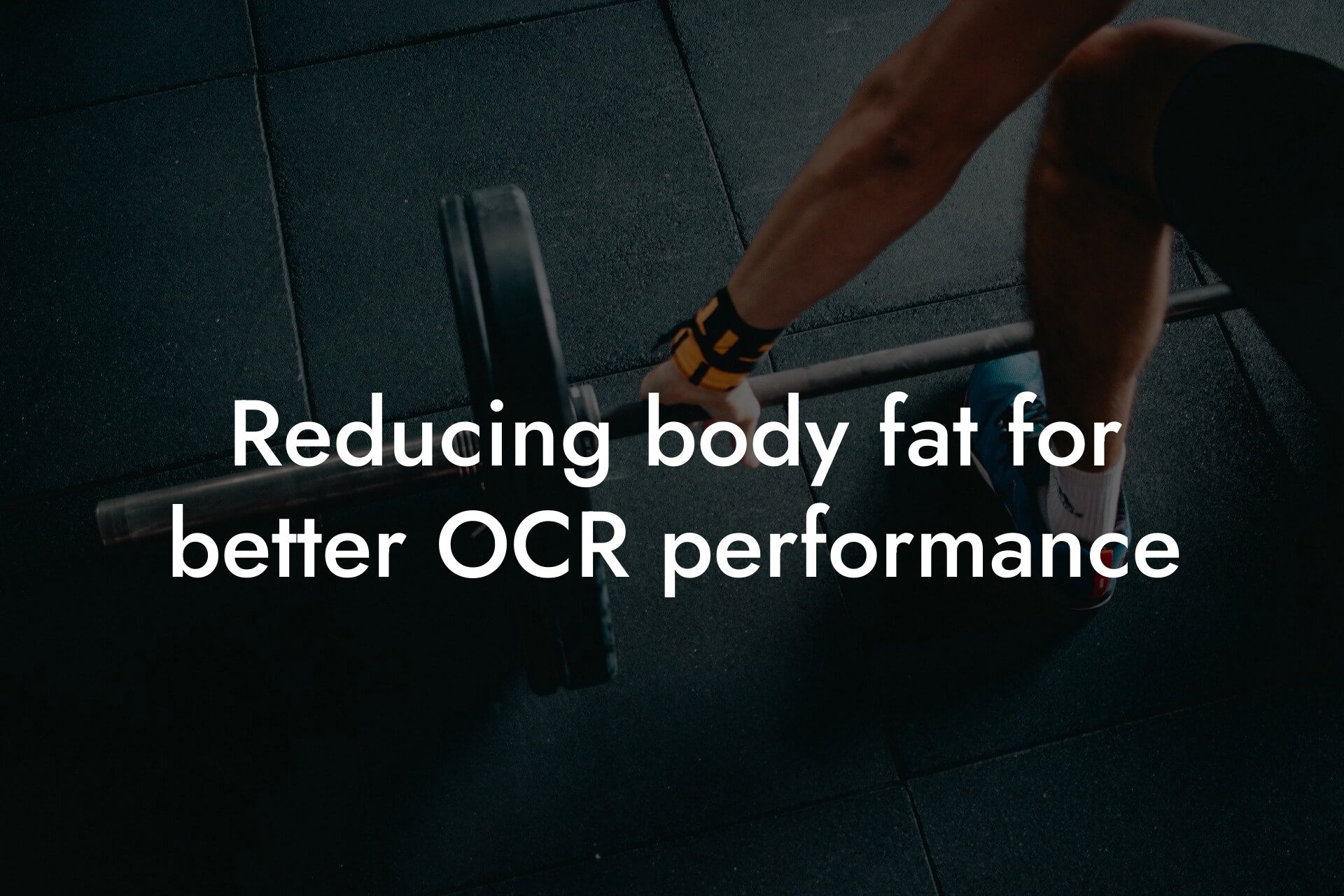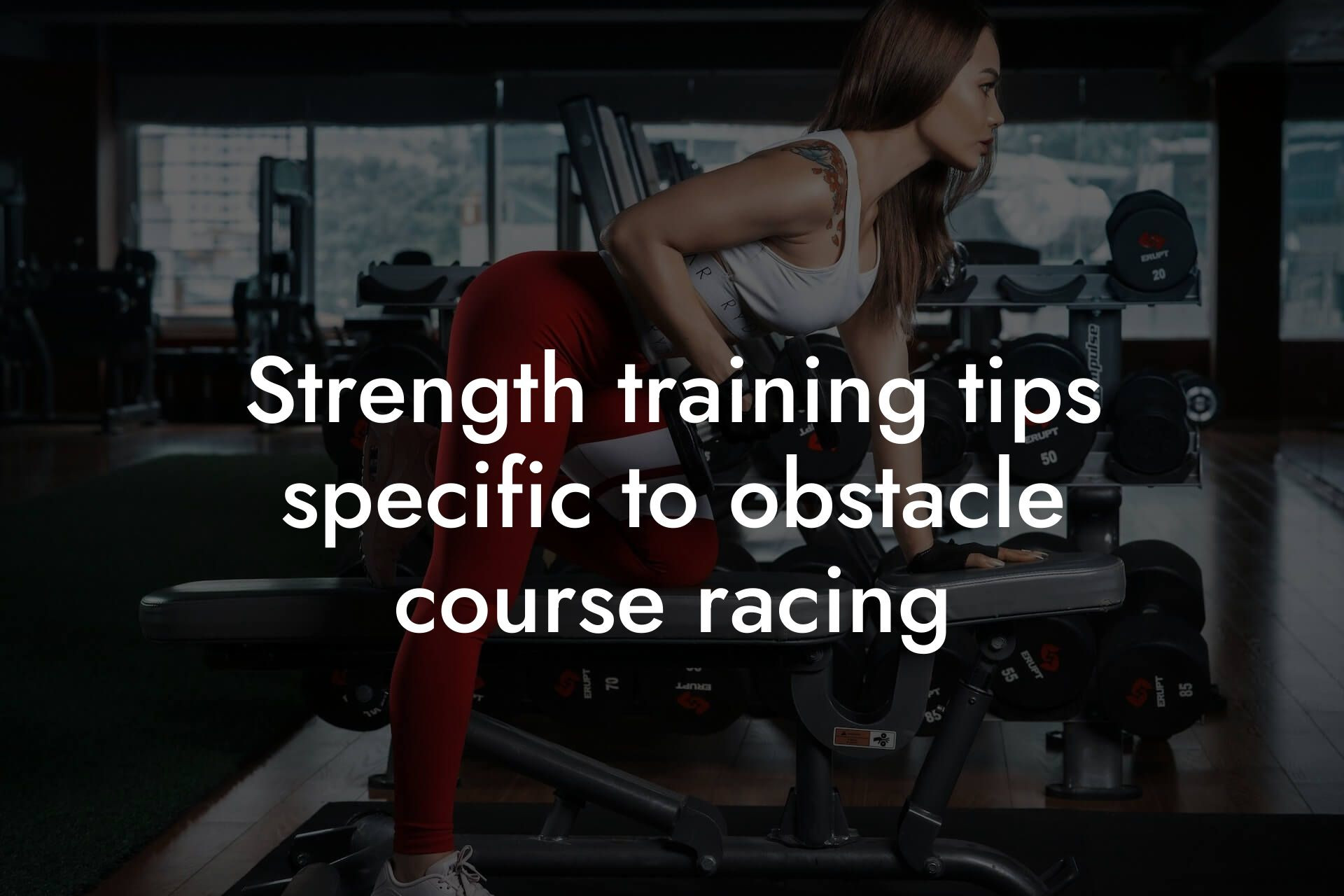As a high-earning professional, you understand the importance of maintaining a strong physical appearance and physique. Engaging in obstacle course training is an excellent way to challenge yourself and improve your overall fitness. However, tracking progress can be a challenge. This is where DEXA scans come in – a powerful tool that provides a comprehensive assessment of your body composition, bone density, and more. In this article, we'll delve into the world of DEXA scans and explore how they can help you monitor your progress in obstacle course training.
Table of Contents
What is a DEXA Scan?
A DEXA (Dual-Energy X-ray Absorptiometry) scan is a non-invasive, low-radiation medical imaging test that measures bone density, body composition, and fat distribution. It's commonly used to diagnose osteoporosis, but its applications extend far beyond that. In the context of obstacle course training, a DEXA scan provides a detailed snapshot of your body's composition, allowing you to track changes over time.
How Does a DEXA Scan Work?
DURING A DEXA SCAN, YOU'LL LIE DOWN ON A TABLE WHILE A LOW-LEVEL X-RAY BEAM IS PASSED OVER YOUR BODY. THE SCAN TAKES ABOUT 10-15 MINUTES TO COMPLETE, AND YOU'LL BE EXPOSED TO A VERY LOW LEVEL OF RADIATION – EQUIVALENT TO ABOUT ONE-TENTH OF A CHEST X-RAY. THE SCAN PRODUCES A HIGHLY ACCURATE, DETAILED IMAGE OF YOUR BODY COMPOSITION, INCLUDING:
- Bone density: Measured in grams per square centimeter (g/cm²), this indicates the strength and density of your bones.
- Body fat percentage: This is the percentage of your body composed of fat, including visceral fat (fat around organs) and subcutaneous fat (fat just beneath the skin).
- Lean mass: This includes muscle mass, organs, and other non-fat tissues.
- Regional body composition: The scan breaks down your body into different regions, such as arms, legs, and torso, providing a detailed analysis of fat distribution and muscle mass in each area.
Benefits of Using DEXA Scans in Obstacle Course Training
By incorporating DEXA scans into your obstacle course training, you can:
- Track changes in body composition: Monitor fat loss, muscle gain, and changes in bone density over time, allowing you to adjust your training and nutrition accordingly.
- Identify areas for improvement: Pinpoint specific regions of your body that require more attention, such as building strength in your legs or reducing visceral fat.
- Optimize nutrition: Use the scan results to tailor your diet and supplementation to support your training goals.
- Enhance performance: By understanding your body's composition, you can fine-tune your training to improve power, speed, and agility.
- Reduce injury risk: Identify potential areas of weakness or imbalance, allowing you to take proactive steps to prevent injuries.
How to Interpret DEXA Scan Results
Understanding your DEXA scan results is crucial to making data-driven decisions about your training. Here are some key metrics to focus on:
- Bone density: A higher bone density indicates stronger bones. Aim for a T-score above -1.0.
- Body fat percentage: Aim for a body fat percentage between 10-15% for men and 15-20% for women.
- Lean mass: Focus on increasing lean mass, particularly in areas relevant to obstacle course training, such as your legs and core.
- Regional body composition: Identify areas with high fat percentages or low lean mass and adjust your training accordingly.
Case Study: How DEXA Scans Helped an Obstacle Course Athlete
Meet Sarah, a 35-year-old obstacle course athlete who was struggling to improve her performance. Despite regular training and a healthy diet, she wasn't seeing the results she wanted. Sarah decided to undergo a DEXA scan to gain a better understanding of her body composition.
The scan revealed that Sarah had a high percentage of visceral fat, which was affecting her power and agility. She also had low bone density in her hips, which increased her risk of injury. Armed with this information, Sarah adjusted her training to focus on strength exercises that targeted her core and legs. She also made dietary changes to reduce her visceral fat percentage.
After six months, Sarah underwent another DEXA scan, which showed significant improvements in her body composition. Her visceral fat percentage had decreased, and her bone density had increased. These changes translated to improved performance on the obstacle course, with Sarah reporting faster times and increased confidence.
Incorporating DEXA scans into your obstacle course training can be a game-changer. By providing a detailed snapshot of your body composition, you can make data-driven decisions about your training and nutrition. Remember, it's not just about aesthetics – it's about optimizing your performance, reducing injury risk, and achieving your goals. At Tano Performance Group, we're committed to helping high-earning professionals like you unlock their full potential. Take the first step towards a stronger, leaner, and more powerful you – schedule your DEXA scan today.
Get Started with Tano Performance Group
At Tano Performance Group, we offer comprehensive DEXA scans and personalized coaching to help you achieve your fitness goals. Our state-of-the-art facility and expert team will provide you with the tools and guidance you need to take your obstacle course training to the next level. Contact us today to schedule your DEXA scan and start unlocking your full potential.
Frequently Asked Questions
What is a DEXA scan, and how does it relate to obstacle course training?
A DEXA (Dual-Energy X-ray Absorptiometry) scan is a non-invasive medical test that measures bone density, body composition, and fat percentage. In the context of obstacle course training, DEXA scans can be used to monitor progress by tracking changes in body composition, muscle mass, and bone density. This information can help athletes optimize their training and nutrition plans to improve performance and reduce injury risk.
How does a DEXA scan work?
A DEXA scan uses low-level X-rays to measure the density of different tissues in the body. The scan takes about 10-15 minutes to complete and is painless. The results provide a detailed breakdown of body composition, including lean mass, fat mass, and bone density.
What are the benefits of using DEXA scans for obstacle course training?
The benefits of using DEXA scans for obstacle course training include: tracking changes in body composition, monitoring muscle growth and bone density, identifying areas for improvement, and optimizing training and nutrition plans. DEXA scans can also help athletes reduce their risk of injury by identifying potential weaknesses and imbalances.
How often should I get a DEXA scan to monitor my progress?
The frequency of DEXA scans depends on individual goals and training phases. Generally, it's recommended to get a scan every 6-12 weeks to track changes in body composition and muscle growth. However, athletes may want to consider more frequent scans during intense training periods or when making significant changes to their nutrition or training plans.
What is the difference between DEXA scans and other body composition tests?
DEXA scans are considered the gold standard for body composition testing due to their high accuracy and precision. Other tests, such as skinfold measurements, bioelectrical impedance analysis (BIA), and hydrostatic weighing, may not provide the same level of detail and accuracy as DEXA scans.
Can DEXA scans help me achieve my weight loss goals?
Yes, DEXA scans can help with weight loss by providing a detailed breakdown of body composition. This information can help athletes identify areas where they need to lose fat and build muscle, allowing them to create a more targeted and effective weight loss plan.
How does bone density relate to obstacle course training?
Bone density is an important aspect of obstacle course training, as it can affect performance and injury risk. Low bone density can increase the risk of fractures and osteoporosis, while high bone density can improve overall athletic performance. DEXA scans can help athletes monitor their bone density and make adjustments to their training and nutrition plans to optimize bone health.
What is the relationship between muscle mass and obstacle course performance?
Muscle mass plays a critical role in obstacle course performance, as it affects power, speed, and endurance. Athletes with higher muscle mass tend to perform better in obstacle course events, as they have more muscle fibers available to generate force and speed. DEXA scans can help athletes track changes in muscle mass and make adjustments to their training and nutrition plans to optimize muscle growth.
Can DEXA scans help me identify areas for improvement in my training?
Yes, DEXA scans can help athletes identify areas for improvement in their training by providing a detailed breakdown of body composition and muscle imbalances. This information can help athletes target specific areas, such as building strength in their legs or improving their core stability, to optimize their overall performance.
How does nutrition affect body composition and obstacle course performance?
Nutrition plays a critical role in body composition and obstacle course performance. A well-balanced diet that provides adequate protein, carbohydrates, and healthy fats can help athletes optimize their body composition and improve their performance. DEXA scans can help athletes identify areas where they need to make adjustments to their nutrition plan to support their training goals.
Can DEXA scans help me reduce my risk of injury?
Yes, DEXA scans can help athletes reduce their risk of injury by identifying potential weaknesses and imbalances. By tracking changes in body composition and muscle growth, athletes can make adjustments to their training and nutrition plans to reduce their risk of injury and optimize their overall performance.
How does obstacle course training affect bone density?
Obstacle course training can have both positive and negative effects on bone density. High-impact exercises, such as jumping and landing, can help improve bone density, while repetitive stress and overtraining can lead to bone loss and increased risk of injury. DEXA scans can help athletes monitor the effects of obstacle course training on their bone density and make adjustments to their training and nutrition plans to optimize bone health.
What is the role of body fat in obstacle course training?
Body fat plays a critical role in obstacle course training, as it affects power, speed, and endurance. Athletes with high levels of body fat may experience decreased performance and increased risk of injury, while athletes with low levels of body fat may experience improved performance and reduced risk of injury. DEXA scans can help athletes track changes in body fat and make adjustments to their training and nutrition plans to optimize their body composition.
Can DEXA scans help me optimize my training plan?
Yes, DEXA scans can help athletes optimize their training plan by providing a detailed breakdown of body composition and muscle growth. This information can help athletes identify areas where they need to make adjustments to their training plan, such as increasing strength training or improving their endurance.
How does DEXA scan data relate to athletic performance?
DEXA scan data can provide valuable insights into athletic performance by tracking changes in body composition, muscle growth, and bone density. This information can help athletes identify areas where they need to make adjustments to their training and nutrition plans to optimize their performance.
Can DEXA scans help me improve my overall health and wellness?
Yes, DEXA scans can help athletes improve their overall health and wellness by providing a detailed breakdown of body composition and muscle growth. This information can help athletes make informed decisions about their nutrition and training plans, leading to improved overall health and wellness.
What is the cost of a DEXA scan, and is it worth the investment?
The cost of a DEXA scan varies depending on the location and provider. While the cost may seem prohibitive to some, the benefits of DEXA scans far outweigh the cost. By providing valuable insights into body composition and muscle growth, DEXA scans can help athletes optimize their training and nutrition plans, leading to improved performance and reduced risk of injury.
How do I find a qualified provider to administer a DEXA scan?
Athletes can find a qualified provider to administer a DEXA scan by searching online or asking for referrals from healthcare professionals or athletic trainers. It's essential to find a provider with experience in administering DEXA scans and interpreting the results.
What should I expect during a DEXA scan?
During a DEXA scan, athletes will lie on a table while the scanner takes X-ray images of their body. The scan takes about 10-15 minutes to complete and is painless. Athletes should wear comfortable clothing and avoid wearing metal objects or jewelry that may interfere with the scan.
How long does it take to get the results of a DEXA scan?
The results of a DEXA scan are typically available within 24-48 hours. The results will provide a detailed breakdown of body composition, including lean mass, fat mass, and bone density.
Can DEXA scans be used for athletes of all levels?
Yes, DEXA scans can be used for athletes of all levels, from recreational to elite. The information provided by DEXA scans can help athletes of all levels optimize their training and nutrition plans, leading to improved performance and reduced risk of injury.
How does Tano Performance Group use DEXA scans to support athlete development?
Tano Performance Group uses DEXA scans as a valuable tool to support athlete development. Our team of experts interprets the results of DEXA scans to provide personalized coaching and guidance to athletes, helping them optimize their training and nutrition plans and achieve their goals.
Here are some related articles you might love...
- The role of body composition in obstacle course racing performance
- Reducing body fat for better OCR performance
- Strength training tips specific to obstacle course racing
- Nutrition strategies for sustained energy during OCR events
- The importance of bone density in OCR performance
- Preventing injuries in obstacle course racing: A comprehensive guide
- Improving agility and strength for obstacle course racing
- Balancing strength, speed, and endurance in OCR training
- Maintaining muscle recovery with OCR training
Zak Faulkner
Zak Faulkner is a leading authority in the realm of physical health and body composition analysis, with over 15 years of experience helping professionals optimise their fitness and well-being. As one the experts behind Tano Performance Group, Zak has dedicated his career to providing in-depth, science-backed insights that empower clients to elevate their physical performance and overall health.
With extensive knowledge of DEXA technology, Zak specializes in delivering comprehensive body assessments that offer precise data on body fat, muscle mass, bone density, and overall physique. His expertise enables individuals to make informed decisions and achieve their fitness goals with accuracy and confidence. Zak’s approach is rooted in a deep understanding of human physiology, combined with a passion for helping clients unlock their full potential through personalised strategies.
Over the years, Zak has earned a reputation for his commitment to excellence, precision, and client-focused service. His guidance is trusted by top professionals who demand the best when it comes to their health. Whether advising on fitness programs, nutritional strategies, or long-term wellness plans, Zak Faulkner’s insights are a valuable resource for anyone serious about taking their health and fitness to the next level.
At Tano Performance Group, Zak continues to lead our Content Team revolutionising how professionals approach their physical health, offering unparalleled expertise that drives real results.




